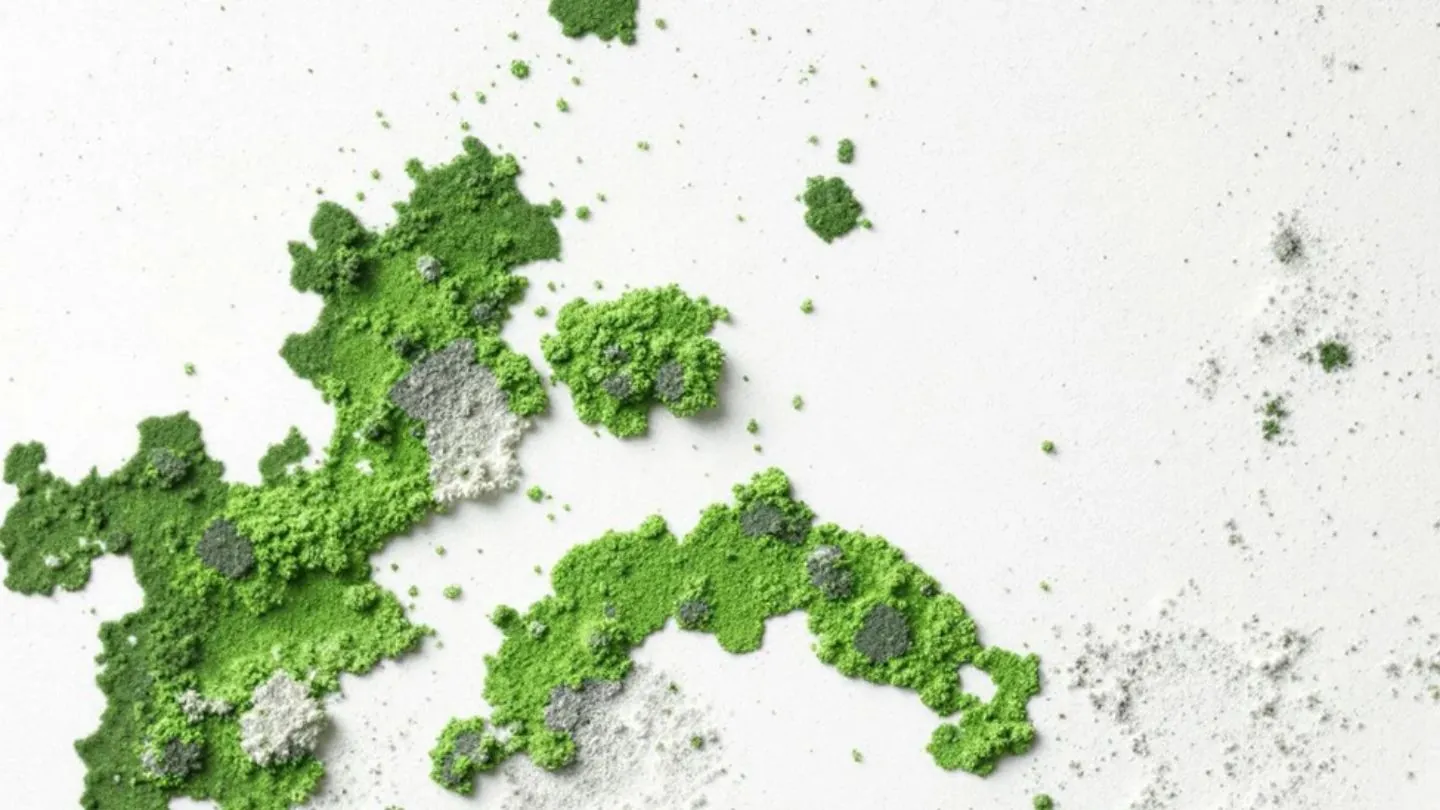How Can Too Much Moisture Become an Indoor Air Quality Issue? Understanding the Risks and Solutions
Excessive moisture indoors can lead to serious air quality issues. When there is too much moisture, it creates a breeding ground for allergens like mold, dust mites, and harmful chemicals. Understanding how too much moisture can become an indoor air quality issue is crucial for maintaining a healthy living environment. This blog explains the problems that high humidity can cause and offers practical solutions to control indoor moisture levels.
Key Takeaways
- High indoor humidity significantly degrades air quality by allowing pollutants like mold, dust mites, and VOCs to thrive, which can lead to health issues.
- Effective humidity control is essential to prevent mold growth, dust mite infestations, and structural damage, with strategies including using dehumidifiers and improving ventilation.
- Signs of excessive moisture, such as musty odors, condensation, and water stains, should be promptly addressed to maintain healthy indoor air quality and prevent structural deterioration.
The Impact of High Indoor Humidity on Air Quality
High indoor humidity can significantly degrade indoor air quality by creating an environment where pollutants become trapped and thrive. When there’s too much moisture in the air, it reduces air circulation, causing pollutants to accumulate indoors. This stagnation of air allows indoor air pollutants, such as dust mites, mold spores, and volatile organic compounds (VOCs), to build up, leading to adverse health effects. Additionally, moisture-laden outdoor air can exacerbate these conditions.
Among the factors that lead to poor indoor air quality, high humidity is a key contributor, and managing indoor moisture levels effectively is essential to mitigate its impact. The interaction between high humidity levels and indoor air pollutants can heighten the health risks associated with long-term exposure. For instance, certain types of building materials and furnishings can emit higher levels of pollutants when exposed to high humidity. This can lead to worsening indoor air pollution, making it crucial to monitor and manage indoor moisture levels effectively.
Condensation caused by excess humidity provides a perfect breeding ground for biological pollutants, which can thrive and proliferate in these moist conditions. This can lead to respiratory issues, particularly in individuals with allergies or asthma. Additionally, increased humidity can lead to irritating odors, particles, and vapors, further deteriorating indoor comfort levels.
Moreover, high humidity can raise the heat index, making it harder for the body to regulate temperature and increasing the likelihood of heat-related illnesses. This combination of factors underscores the importance of controlling indoor relative humidity to maintain healthy human health and a comfortable indoor environment. Proper ventilation, air conditioning, and regular maintenance of HVAC systems can help manage indoor humidity levels effectively.
Mold and Mildew Growth from Excess Moisture

Excess moisture is a primary catalyst for mold and mildew growth, which can have severe implications for both health and property. Key points include:
- High indoor humidity levels above 55% can activate mold growth.
- Optimal conditions for mold proliferation occur around 70% humidity.
- Mold spores thrive in these environments.
- The healthiest home humidity level is crucial, as mold releases spores that can significantly diminish air quality and pose health risks.
Condensation caused by excessive humidity provides a perfect breeding ground for mold in various parts of a home, from bathrooms to basements. Inadequate ventilation exacerbates this issue by allowing moisture to accumulate in closed spaces, further promoting mold growth. This can lead to a musty smell in indoor spaces, often a sign of mold and mildew presence.
Health impacts from mold exposure can be severe, ranging from allergic reactions to central nervous system issues due to mycotoxins produced by mold. Individuals exposed to these toxins may experience symptoms such as headaches, fatigue, and respiratory issues. Simply cleaning mold with a sponge may not be effective, as it tends to reappear unless the underlying moisture source is addressed.
To prevent mold growth, it is crucial to control indoor humidity levels through effective moisture control strategies. Regular use of dehumidifiers, and improving ventilation, are essential steps in mitigating mold issues and maintaining good indoor air quality.
Dust Mites and High Humidity
Dust mites are another common indoor air pollutant that thrives in high-humidity environments. These microscopic creatures flourish in environments with increased moisture, leading to a greater risk of infestations and indoor allergen levels. When indoor humidity levels exceed comfortable ranges, dust mites can multiply rapidly, exacerbating allergy symptoms and contributing to poor indoor air quality.
Elevated humidity can also lead to a rise in airborne allergens and pollutants, such as mold spores and dust mite waste, resulting in respiratory issues. The waste produced by dust mites can become airborne and aggravate respiratory conditions, particularly in individuals with asthma or other respiratory sensitivities.
A humid atmosphere can facilitate the release of dust mite waste into the warm air, which can further degrade indoor air quality and worsen indoor air pollution. Increased allergy symptoms, such as sneezing, coughing, and itchy eyes, can often point to high humidity levels, as these conditions foster environments where mold and dust mites thrive.
Controlling indoor humidity levels is crucial for managing dust mite populations and improving overall indoor air quality. Using dehumidifiers, improving ventilation, and maintaining proper HVAC systems can help reduce humidity levels and mitigate the impact of dust mites on indoor air quality.
Chemical Pollutants and Humidity Levels
Humidity levels play a significant role in influencing the concentration and creation of chemical reactions and pollutants within indoor environments. Higher humidity levels increase emission rates of volatile organic compounds (VOCs), which are harmful chemical pollutants found in many household items. These compounds can off-gas at higher rates in moist conditions, leading to increased concentrations of indoor air pollutants when water vapor is present.
Moisture levels and moisture content also impact the off-gassing rates of various materials, contributing to higher VOC emissions and worsening indoor air pollution. This can have serious implications for indoor air quality, as elevated VOC levels are associated with various health problems, including respiratory issues and central nervous system effects, and the amount of water vapor can play a role in these dynamics, highlighting both the positive and negative effects.
Monitoring and controlling indoor humidity levels is crucial for managing the concentration of chemical pollutants. By maintaining optimal humidity levels, homeowners can decrease pollutant concentrations and improve overall air quality. Effective moisture control strategies, such as using dehumidifiers and improving ventilation, can help mitigate the impact of chemical pollutants on indoor environments.
Structural Damage Due to Moisture
Excess moisture can lead to significant structural damage to homes, resulting in costly repairs and compromised indoor air quality. Materials like wood and drywall are particularly vulnerable to moisture degradation, which can weaken the building structure and create an environment conducive to mold growth. This degradation can result in structural deterioration and potentially lead to expensive home repairs.
Common causes of structural damage include moisture incursion from poor drainage systems or defects in building materials. Water infiltration can cause wood to warp, paint to peel, and drywall to become soft and crumbly. These issues not only affect the structural integrity of a home but also contribute to poor indoor air quality by promoting mold and mildew growth.
Regular inspection of structural components is vital to detect early signs of water damage and prevent extensive repairs. Homeowners should be vigilant about maintaining proper drainage systems, sealing cracks, and addressing any signs of moisture incursion promptly. Effective moisture control strategies can help preserve the structural integrity of a home and maintain a healthy indoor environment, including the building envelope.
Signs of Excess Moisture in Your Home
Identifying signs of excess moisture in your home is the first step towards addressing and mitigating its effects on indoor air quality and structural integrity. A persistent musty odor in indoor areas is often an indicator of mold or mildew growth, which thrives in high-humidity environments. This odor is a red flag that excess moisture is present and needs to be addressed.
Condensation on windows is another common sign of high humidity levels. When warm, moisture-laden air meets cooler surfaces, it results in condensation, indicating elevated indoor humidity. This not only affects visibility but also contributes to mold growth and poor indoor air quality.
Water stains on walls and ceilings are also indicative of excess moisture. These stains result from condensation caused by elevated humidity interacting with cool surfaces. Additionally, the presence of warped wood in furniture or structural components indicates that the wood has absorbed excess moisture due to high humidity levels.
These signs highlight the importance of monitoring indoor humidity levels and taking action to control moisture migration, as these are two Key factors and a key factor.
Solutions for Controlling Indoor Humidity
Maintaining good indoor air quality and protecting your home from damage caused by excess moisture requires professional solutions like those from Total Comfort Cooling & Heating for controlling indoor humidity. High humidity levels can lead to a range of problems, including mold growth, dust mite infestations, structural damage, and elevated chemical pollutants. Addressing these issues through expert assistance ensures a healthier and more comfortable living environment.
Professional-Grade Dehumidifiers and Humidity Management
Certified professionals such as Total Comfort Cooling & Heating can assess your home to determine the ideal solution for managing indoor humidity, including the installation of high-performance, professional-grade dehumidifiers. Unlike standard devices, these advanced systems are tailored to your home’s specific needs, ensuring thorough moisture reduction for improved air quality and comfort. Technicians also handle the placement, setup, and maintenance of these systems, guaranteeing optimal performance without the hassle.
Advanced Ventilation Systems
Upgrading to professionally installed ventilation systems is another effective way to keep humidity levels in check. From advanced bathroom and kitchen exhaust fans to whole-home ventilation units, these solutions are designed to remove moisture-laden air quickly and efficiently. Skilled professionals from Total Comfort Cooling & Heating ensure that these systems are properly configured and integrated with your existing HVAC setup, providing reliable moisture control and enhanced airflow throughout your home.
Expert HVAC System Maintenance
Heating, ventilation, and air conditioning (HVAC) systems play a critical role in regulating humidity. Scheduling regular maintenance with certified experts ensures that these systems operate at peak efficiency. From cleaning coils to optimizing airflow, professional technicians from Total Comfort Cooling & Heating fine-tune your HVAC system to manage humidity levels effectively while also reducing energy costs. They can also identify any underlying issues that may contribute to excess moisture, addressing them before they escalate.
By working with experienced professionals, homeowners can benefit from customized solutions that go beyond standard approaches. Professional services not only provide long-lasting results but also save you time and effort while safeguarding your home and health. Reach out to trusted experts to create a safer, healthier living environment with humidity control solutions tailored to your needs.
Final Thoughts on Managing Indoor Moisture
Excess moisture in your home can significantly impact indoor air quality, leading to issues like mold growth, unpleasant odors, and potential health concerns. Managing humidity levels is essential to creating a cleaner, healthier, and more comfortable living environment. By addressing moisture promptly, you can protect both your home and your well-being.
If you’re looking to improve indoor air quality in Port Charlotte, we’re here to help. At Total Comfort Cooling & Heating, our HVAC expert in Port Charlotte specializes in offering effective solutions to tackle moisture-related challenges. From expert assessments to tailored services, we are dedicated to enhancing your home’s comfort and air quality in Boca Grande, Venice, Rotonda, Punta Gorda, North Port, Manasota, El Jobean, Burnt Store, and the surrounding areas. Reach out to us today to explore how we can make your space fresher and healthier.
Frequently Asked Questions
How does high indoor humidity affect air quality?
High indoor humidity negatively impacts air quality by trapping pollutants, fostering conditions that enhance their proliferation, and elevating associated health risks.
What are the signs of excess moisture in a home?
Excess moisture in a home is indicated by musty odors, condensation on windows, water stains on walls and ceilings, and warped wood furniture. Addressing these signs promptly is essential to prevent further damage.
How can dehumidifiers help in controlling indoor humidity?
Dehumidifiers effectively control indoor humidity by reducing moisture levels, particularly in spaces with inadequate air circulation. Opting for certified models can additionally enhance energy efficiency.
Why is proper ventilation important for controlling indoor humidity?
Proper ventilation is essential for controlling indoor humidity as it effectively removes excess moisture from daily activities, enhancing air quality. This contributes to a healthier indoor environment.
READY FOR YOUR NEXT HEATING OR COOLING PROJECT?
Contact us to get a quote and see why our customer service is recognized as the best in the industry.







 Special Offer: 12 Months - No Interest, No Payments!
Special Offer: 12 Months - No Interest, No Payments!